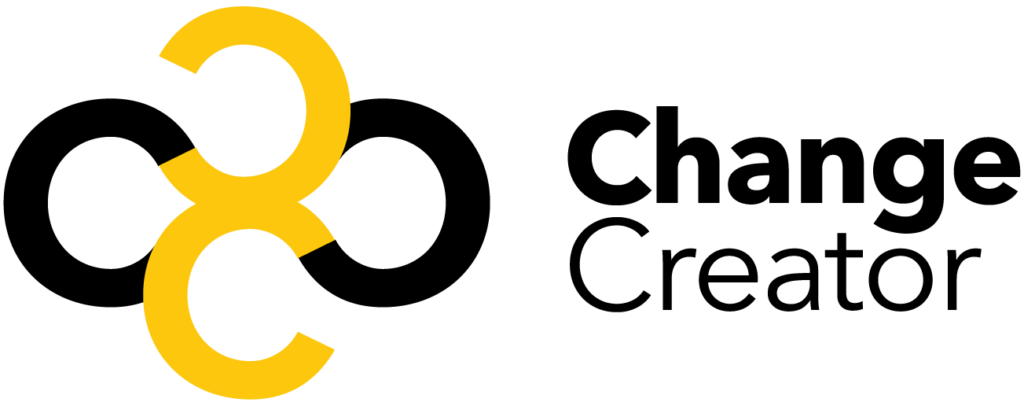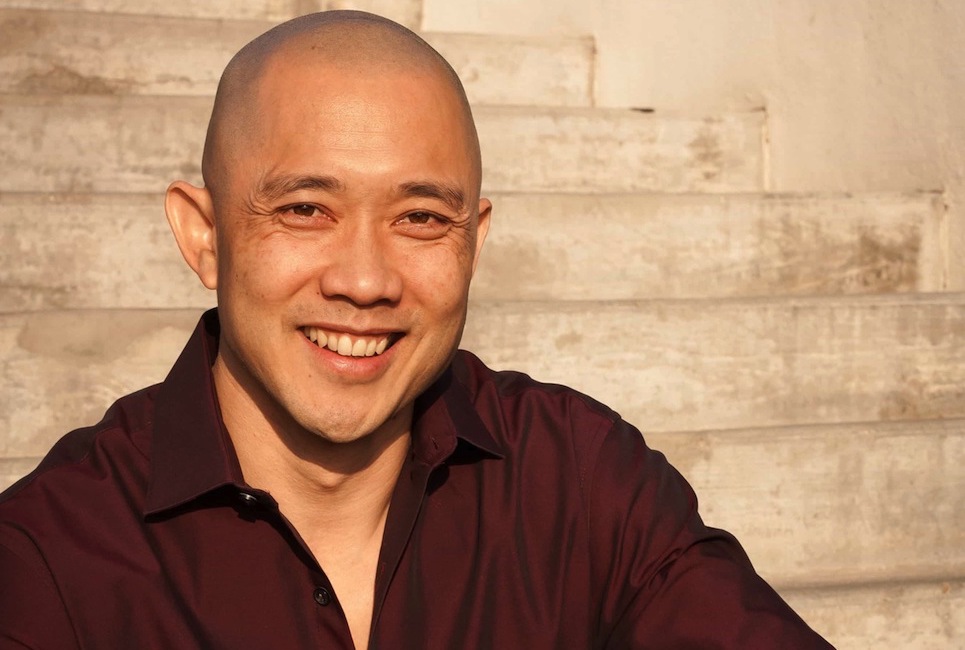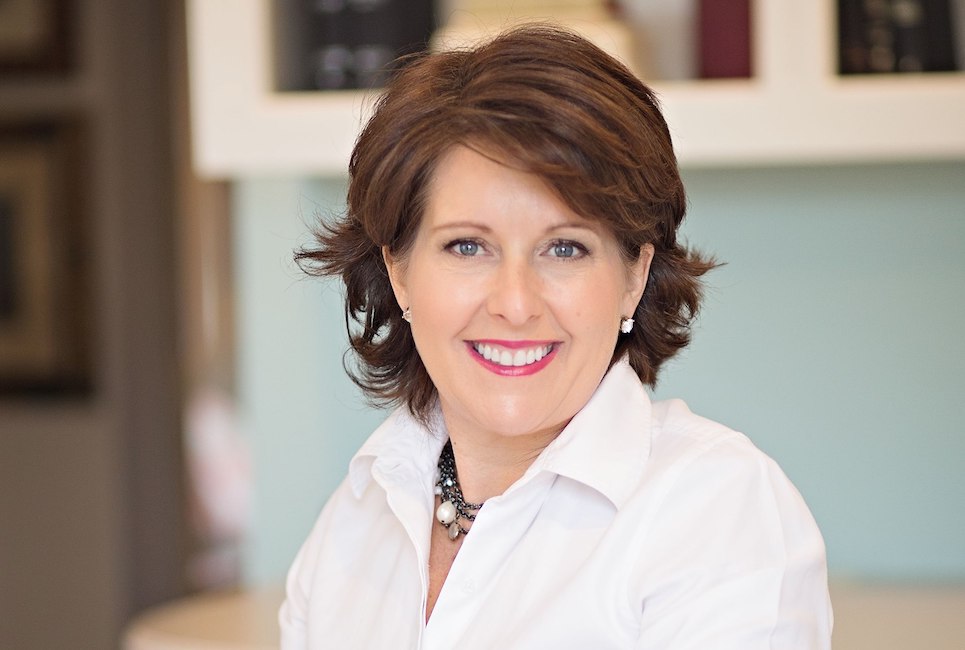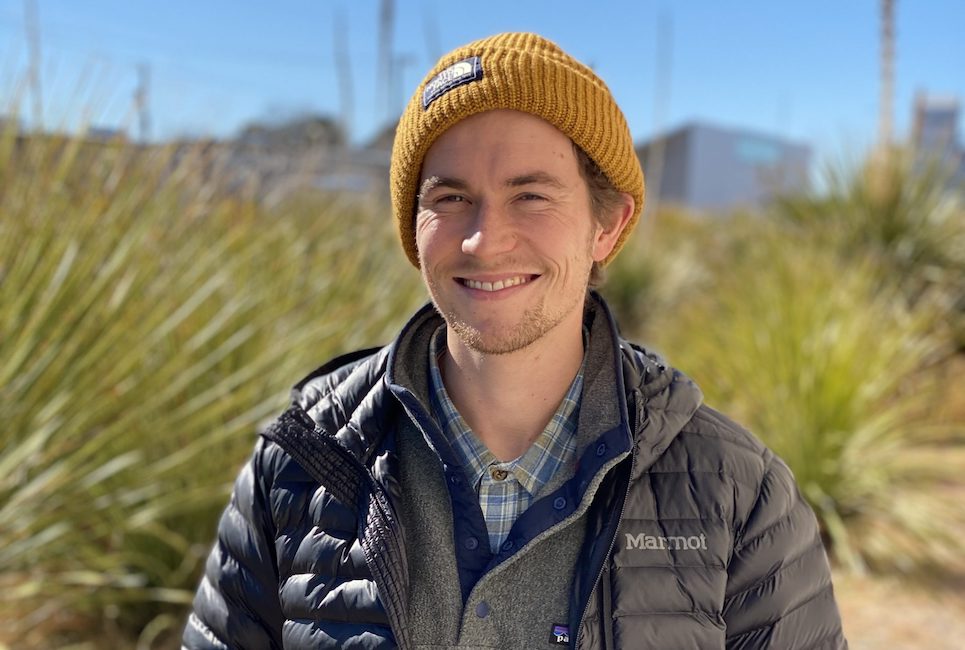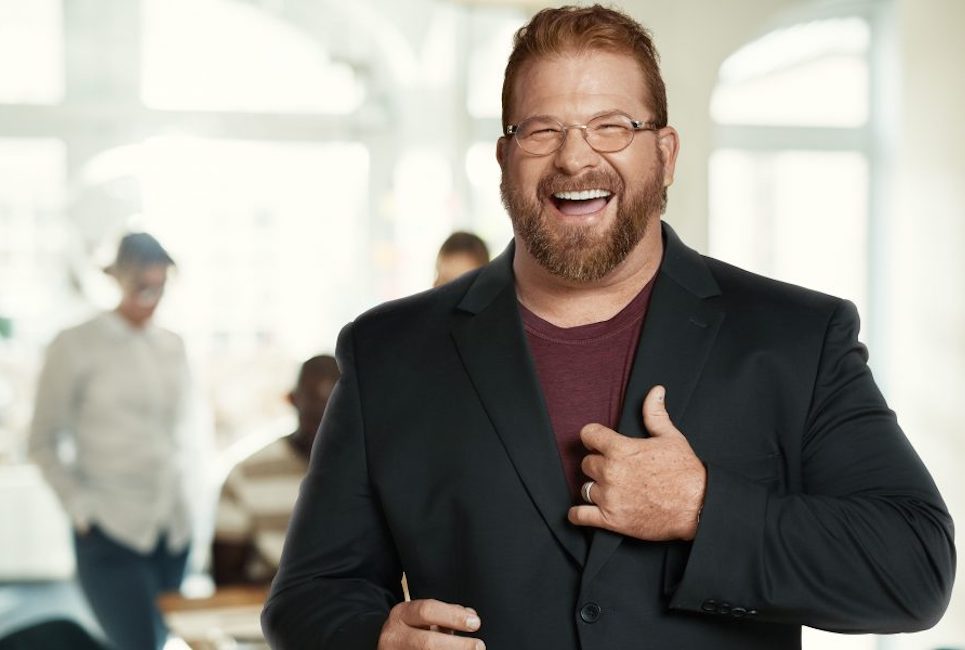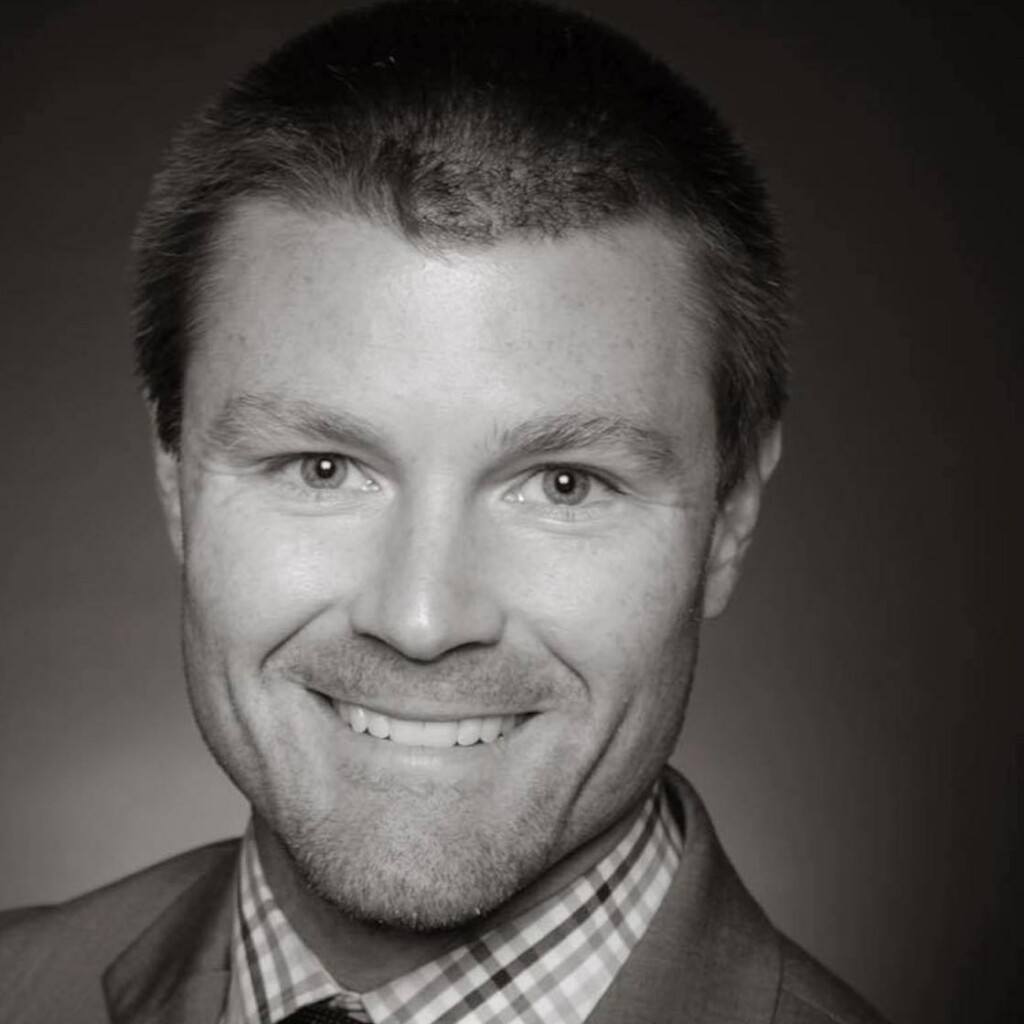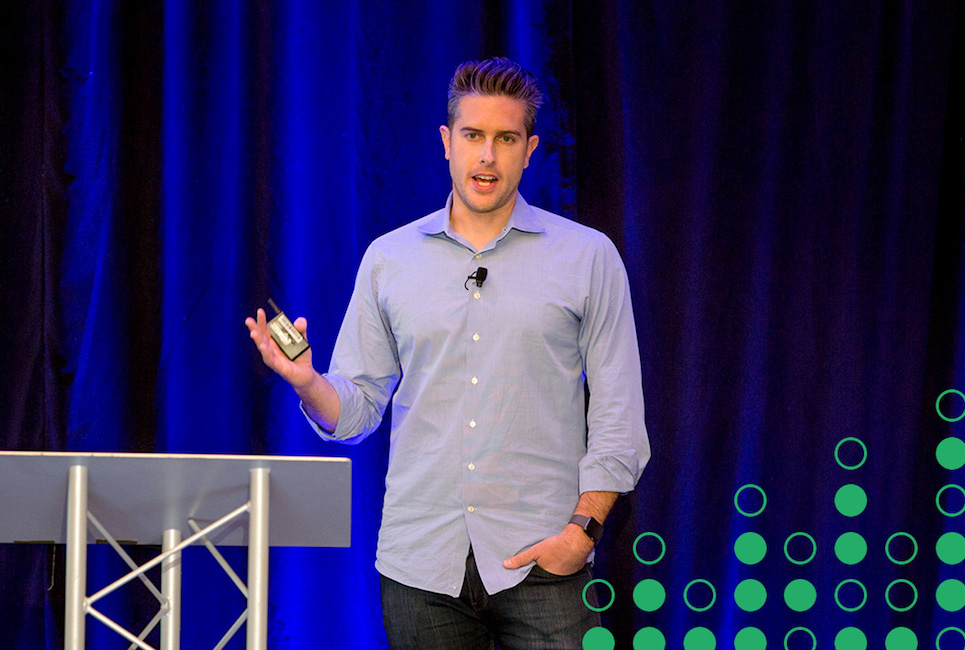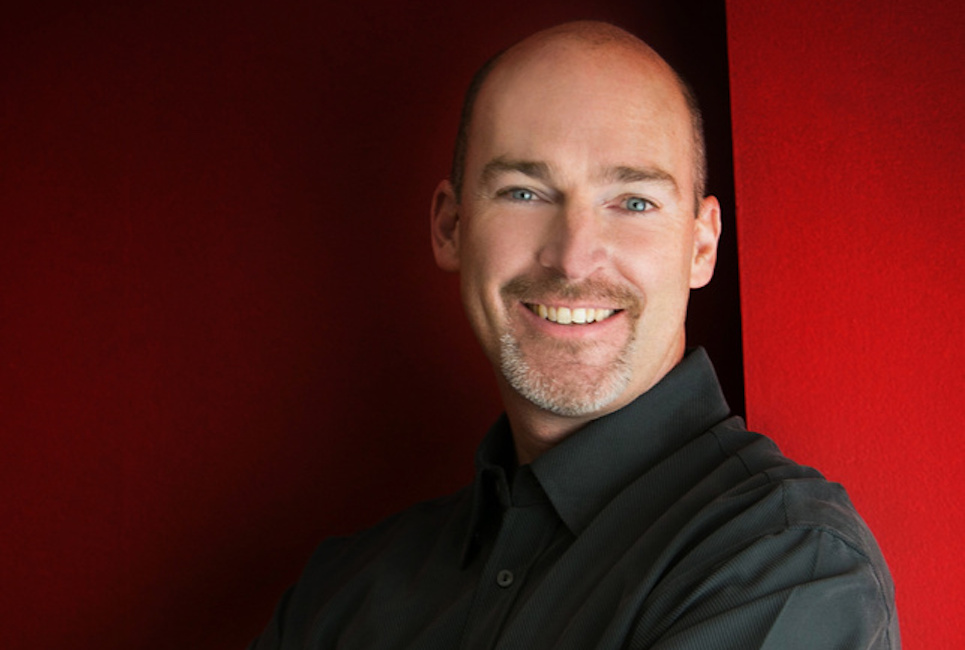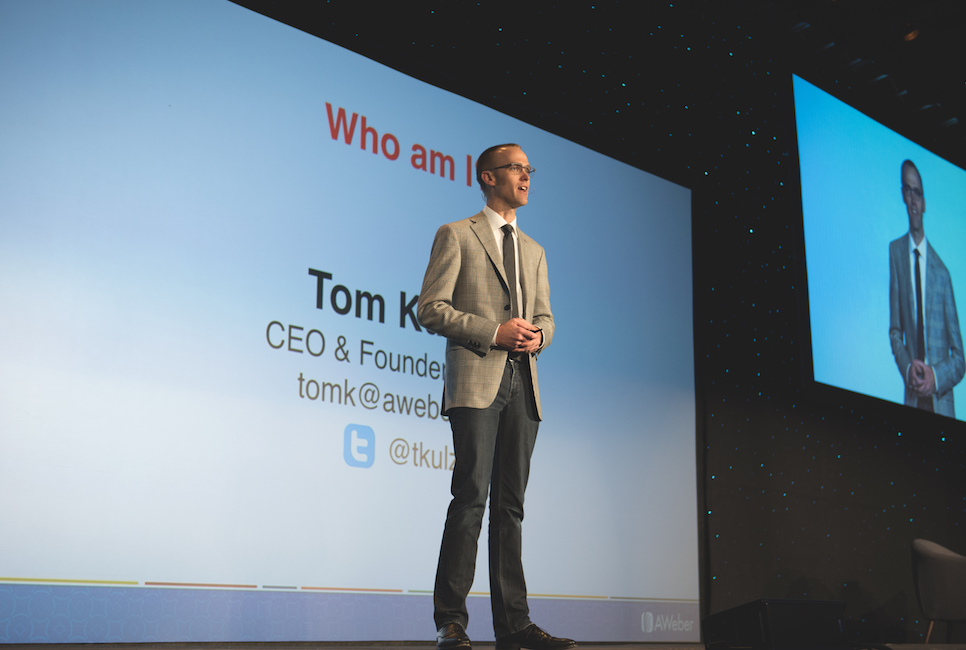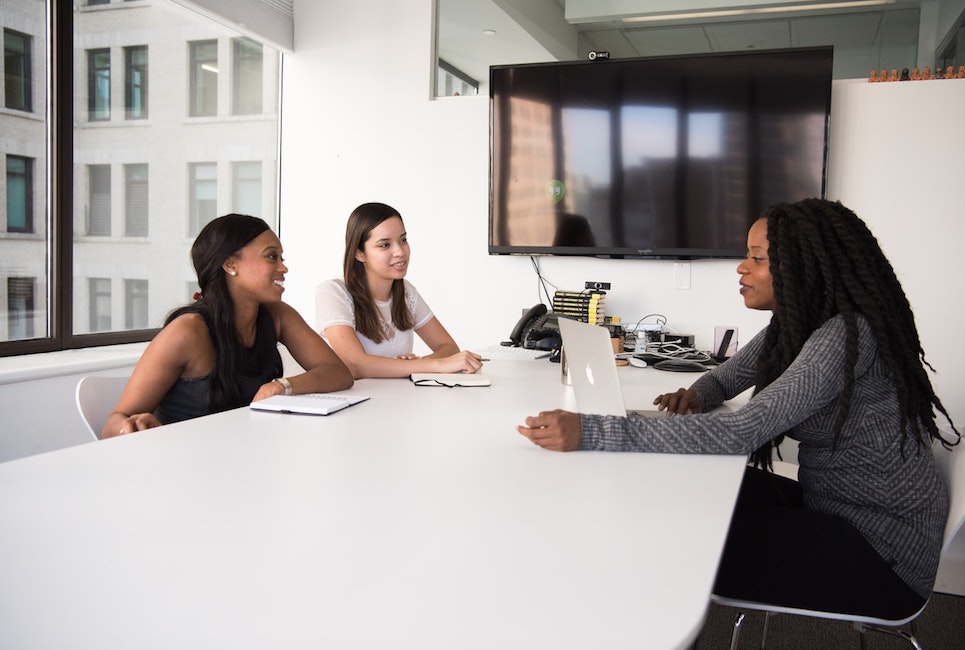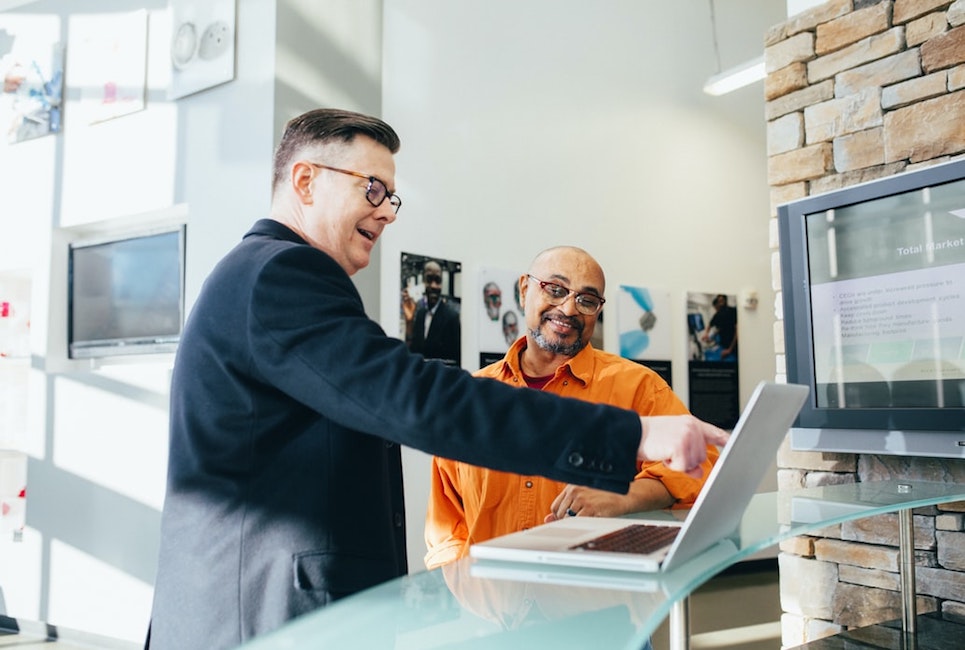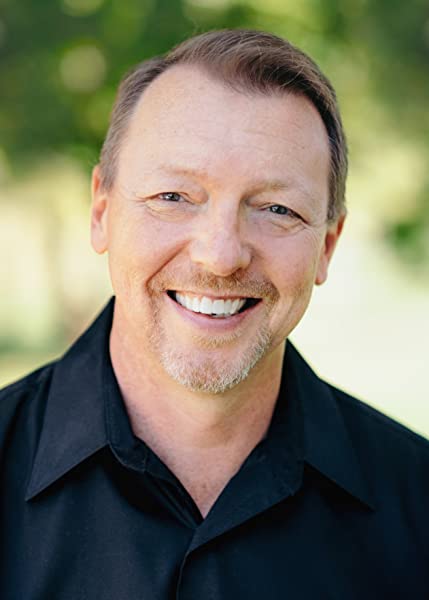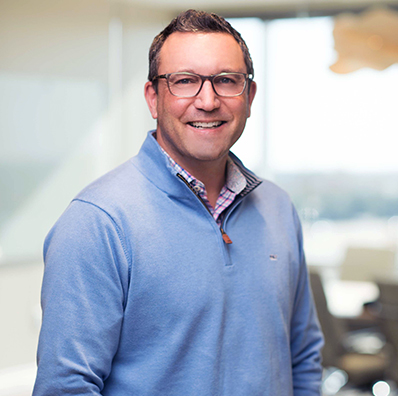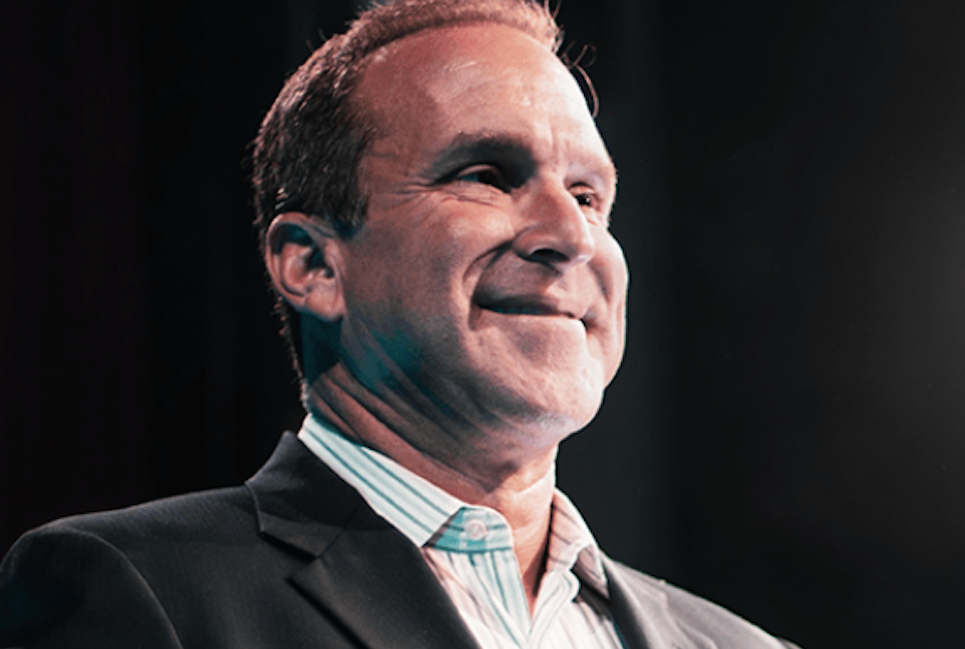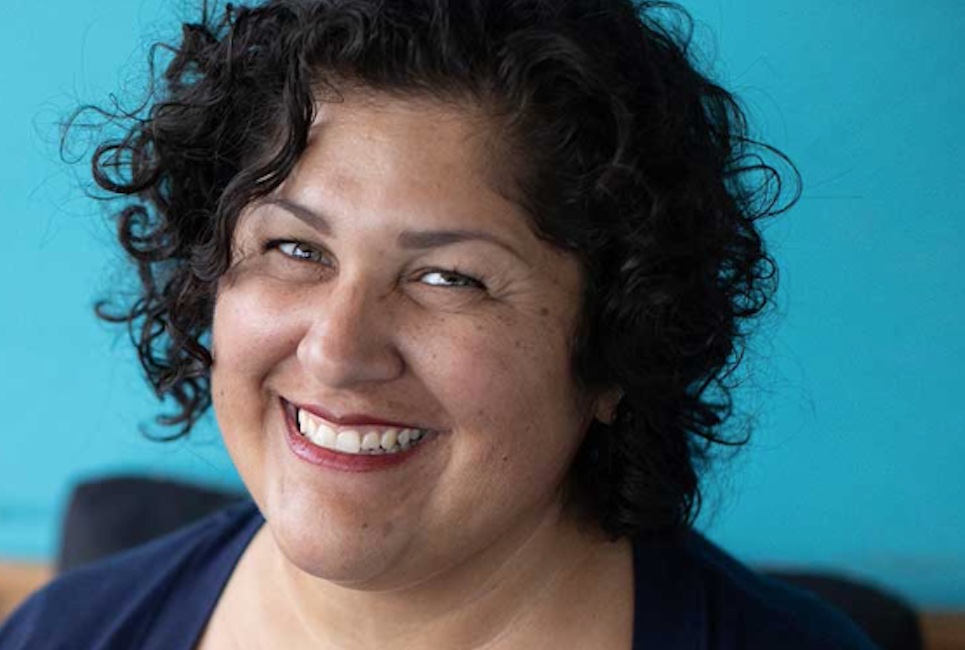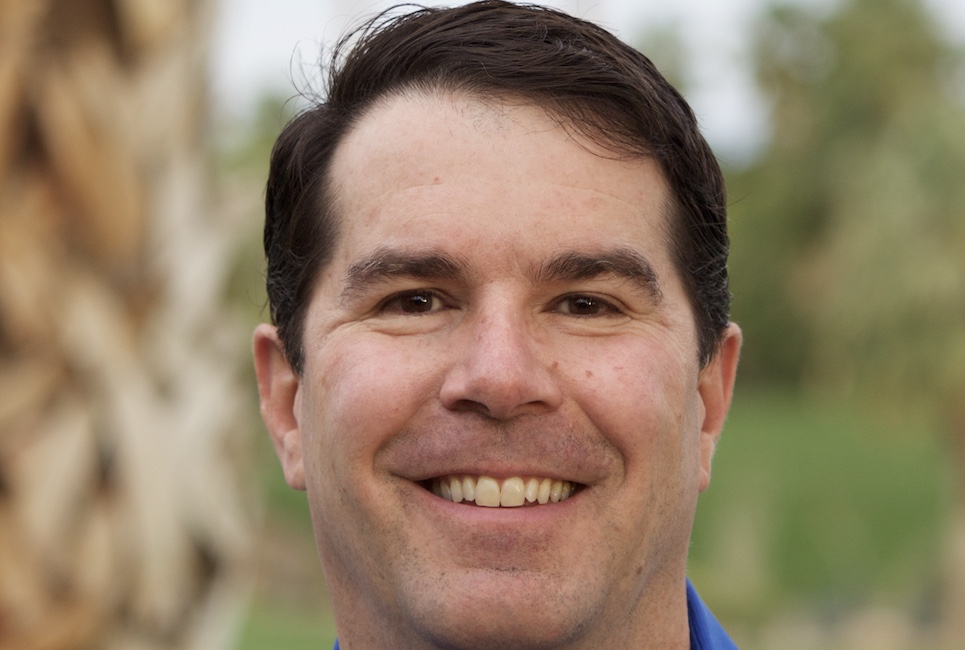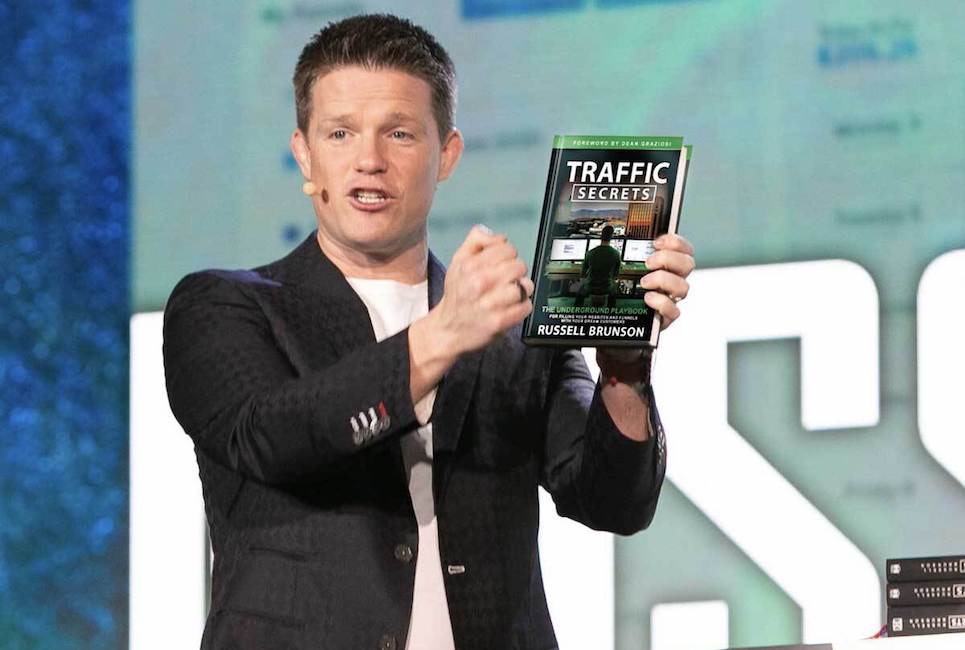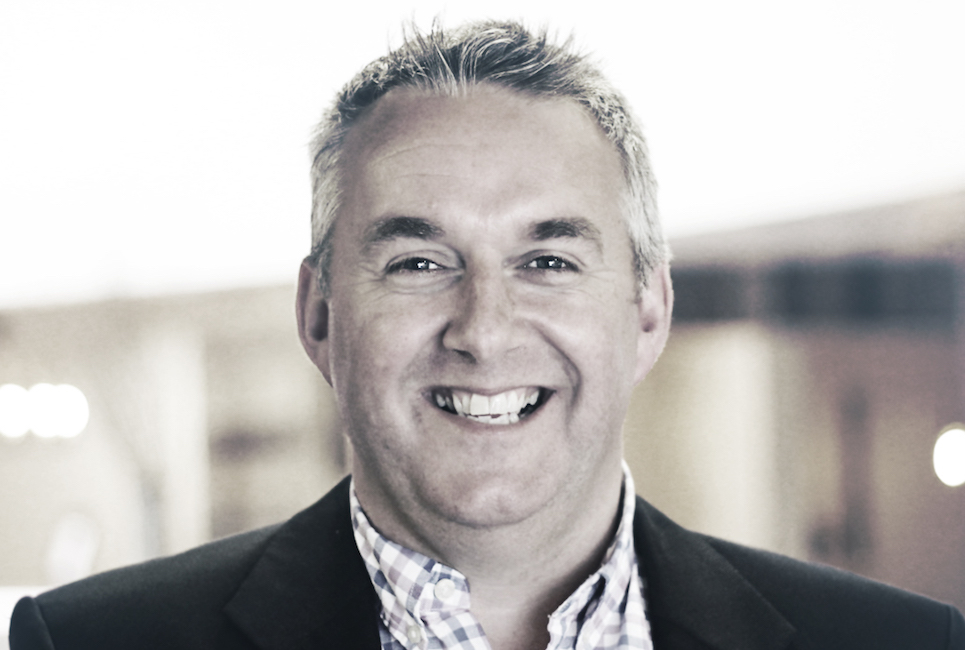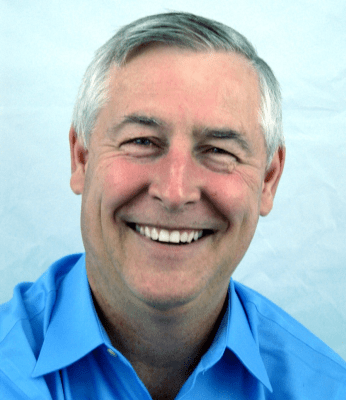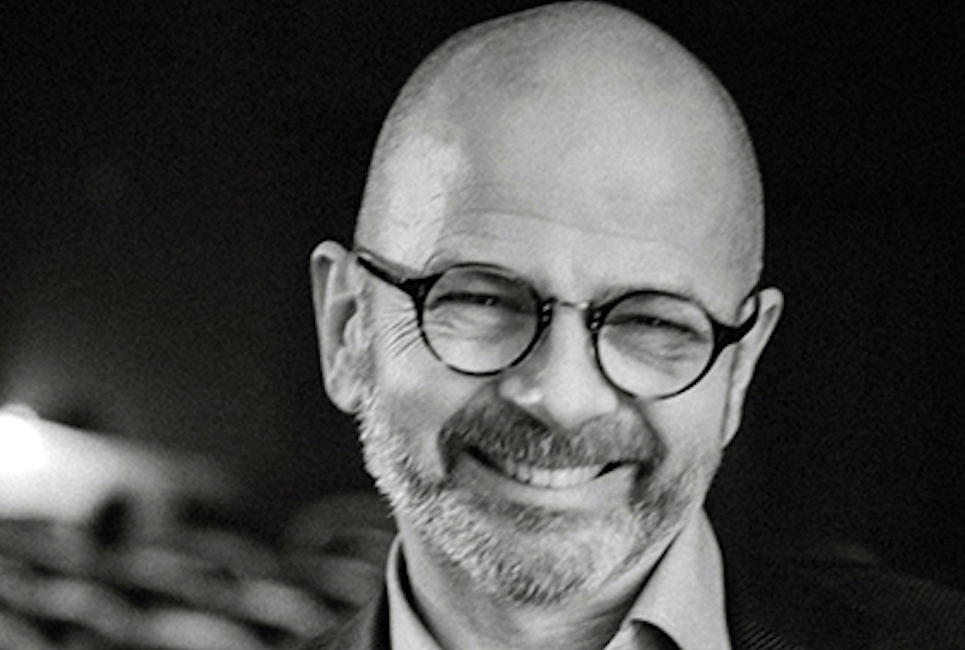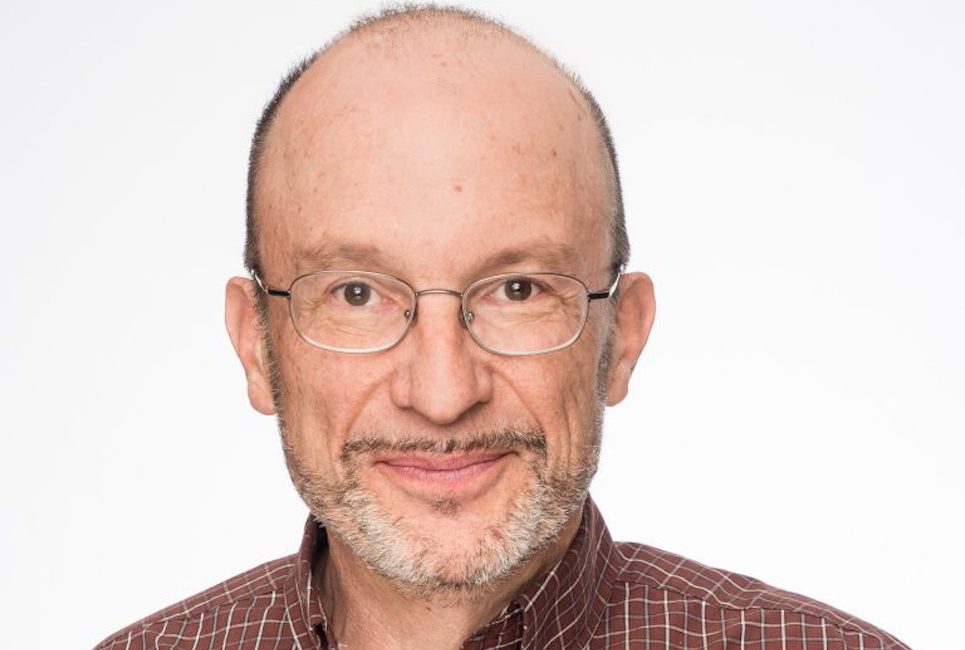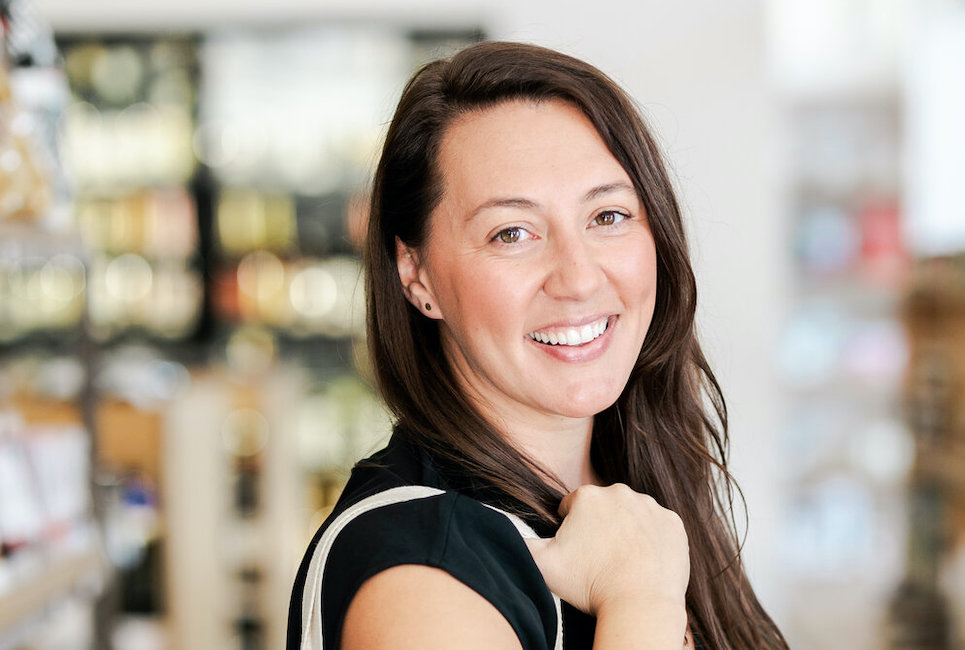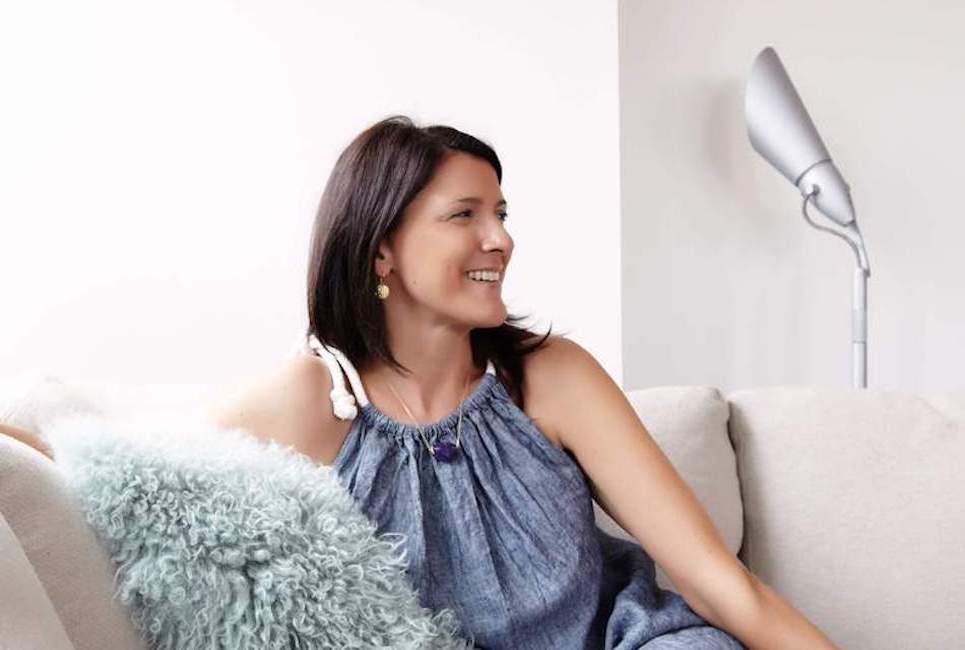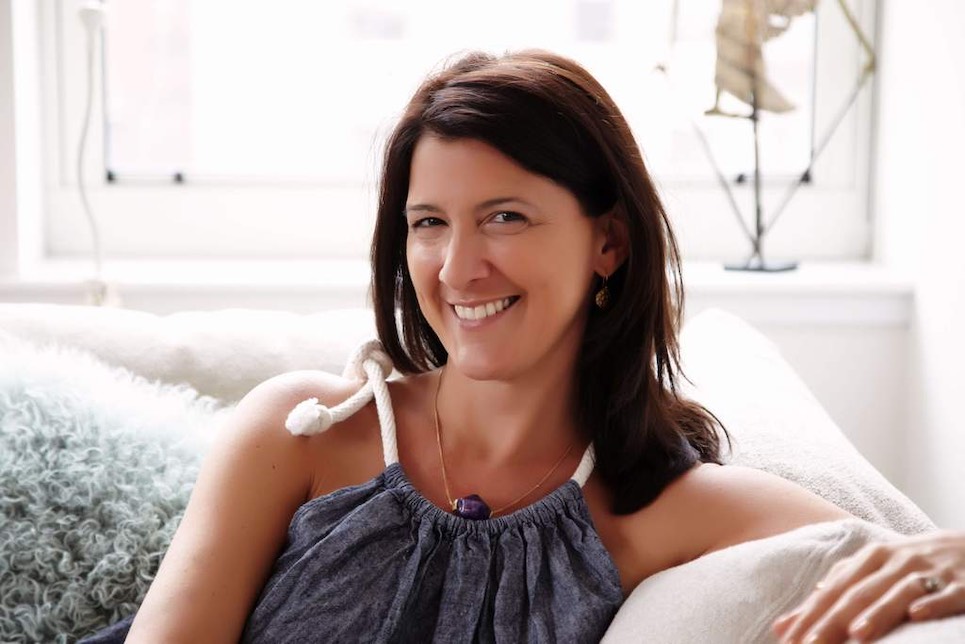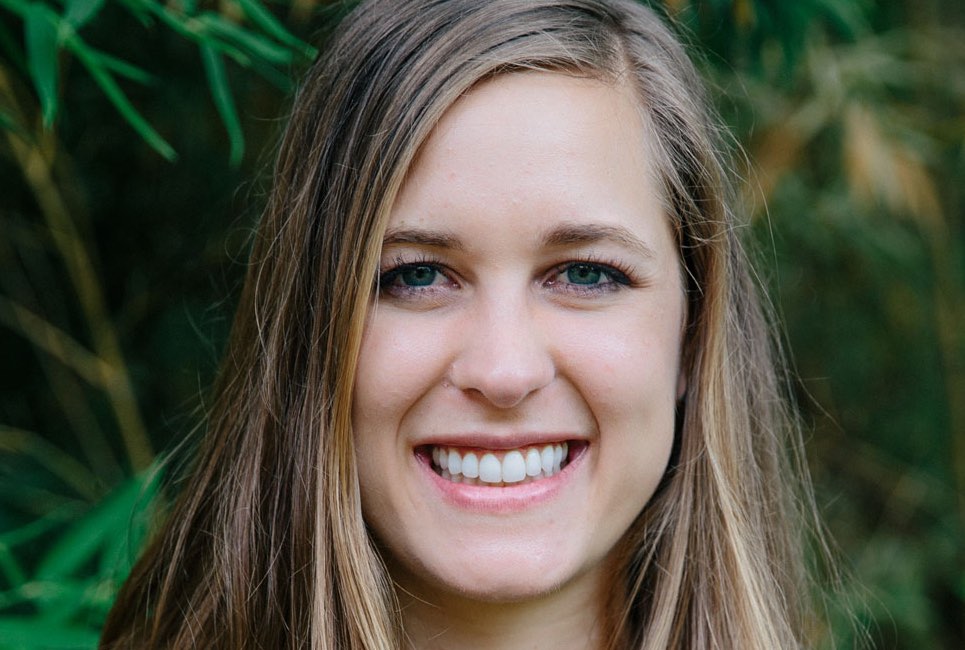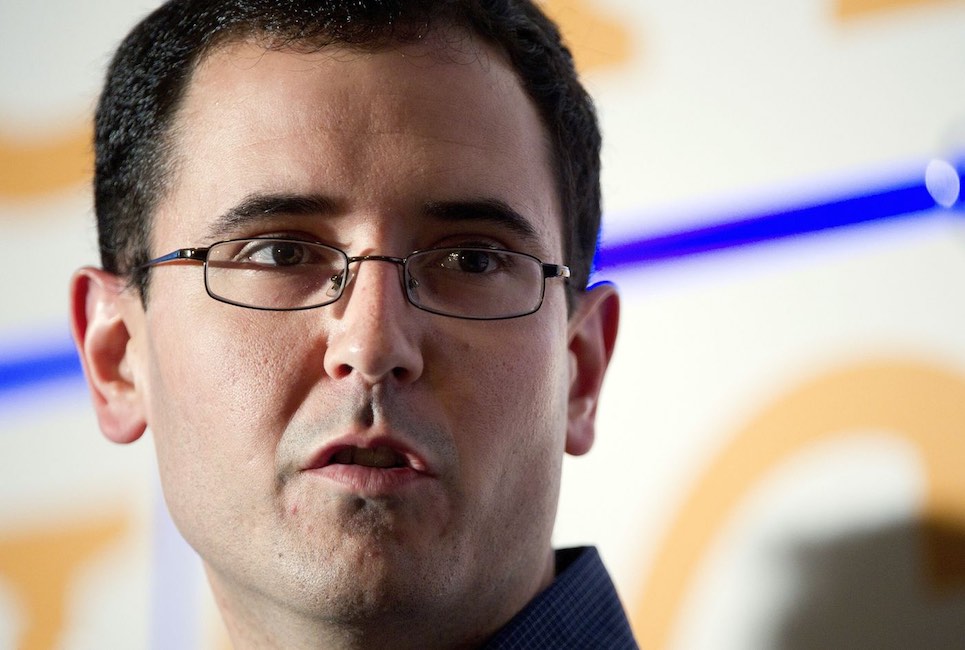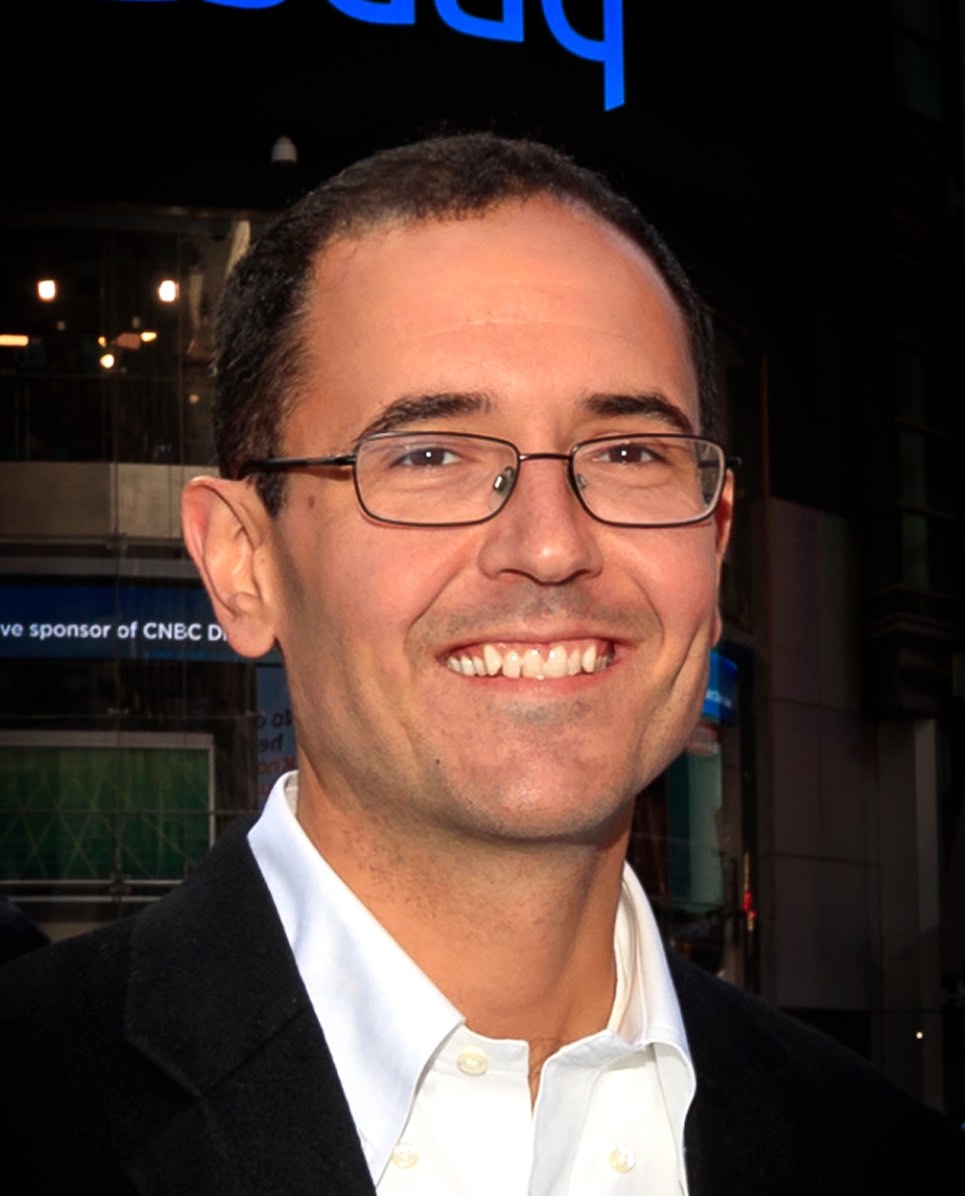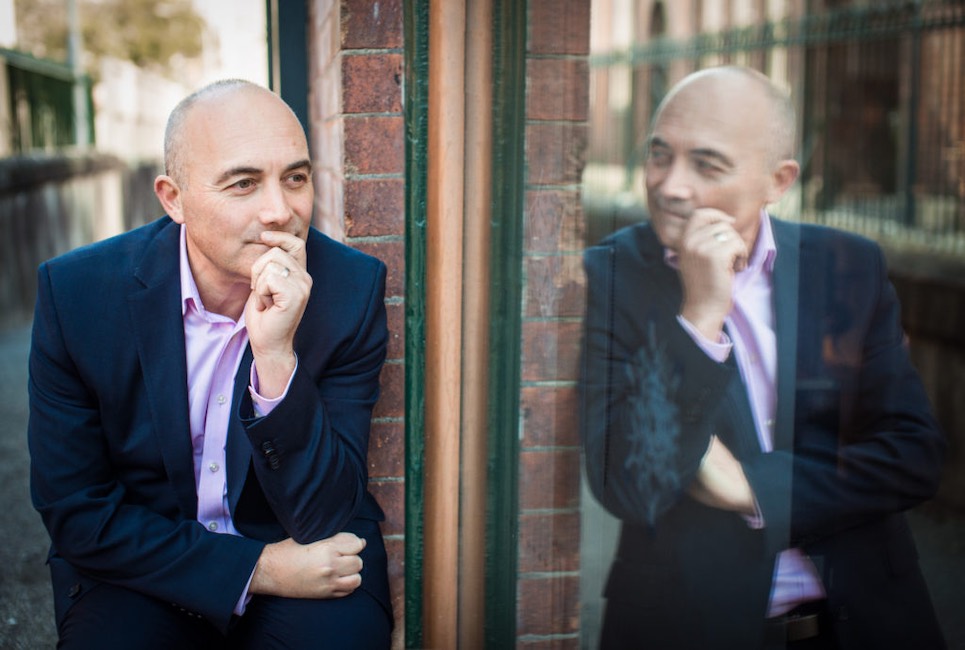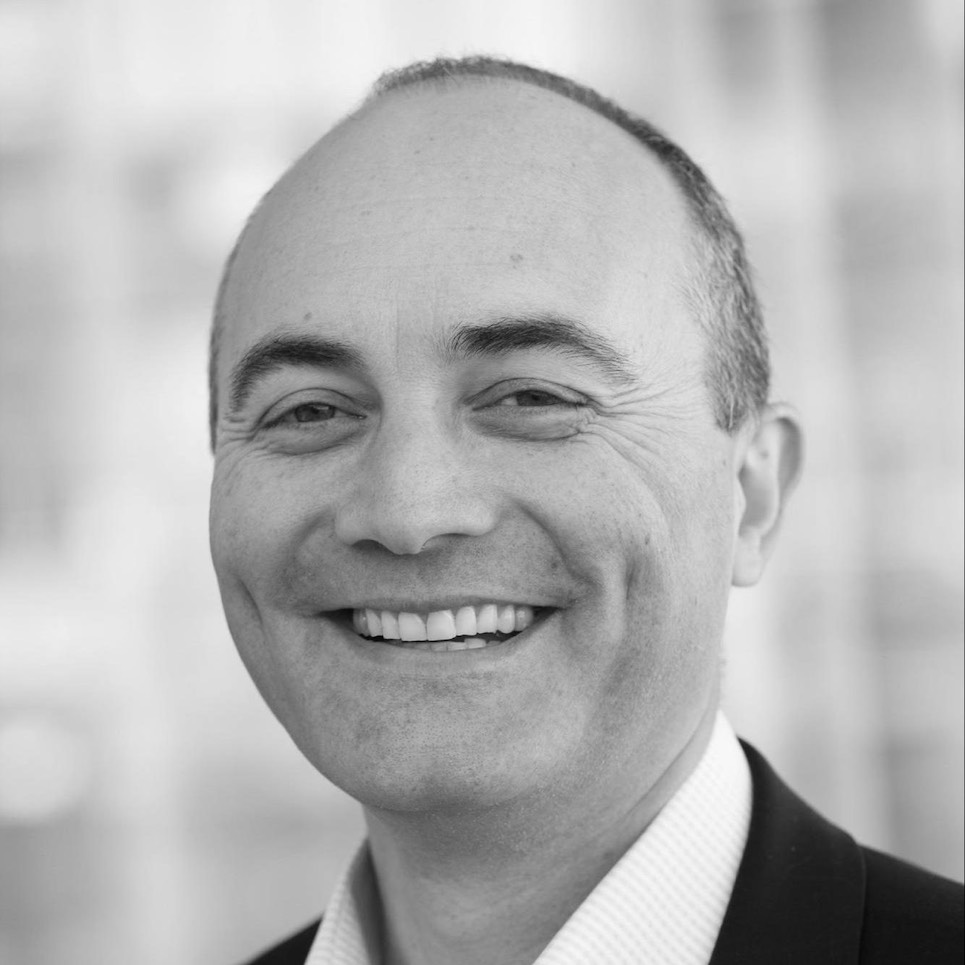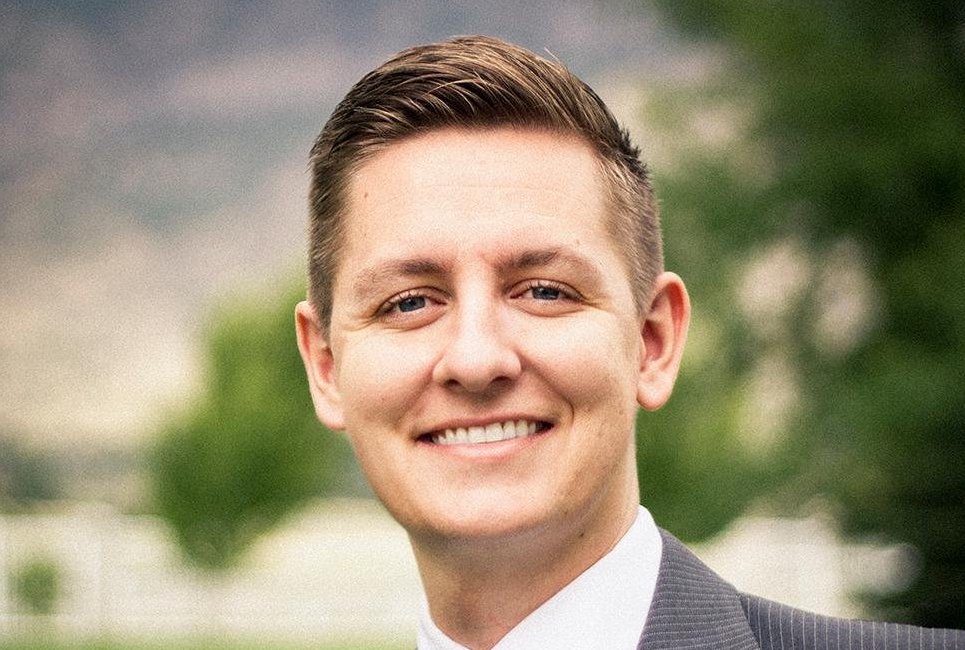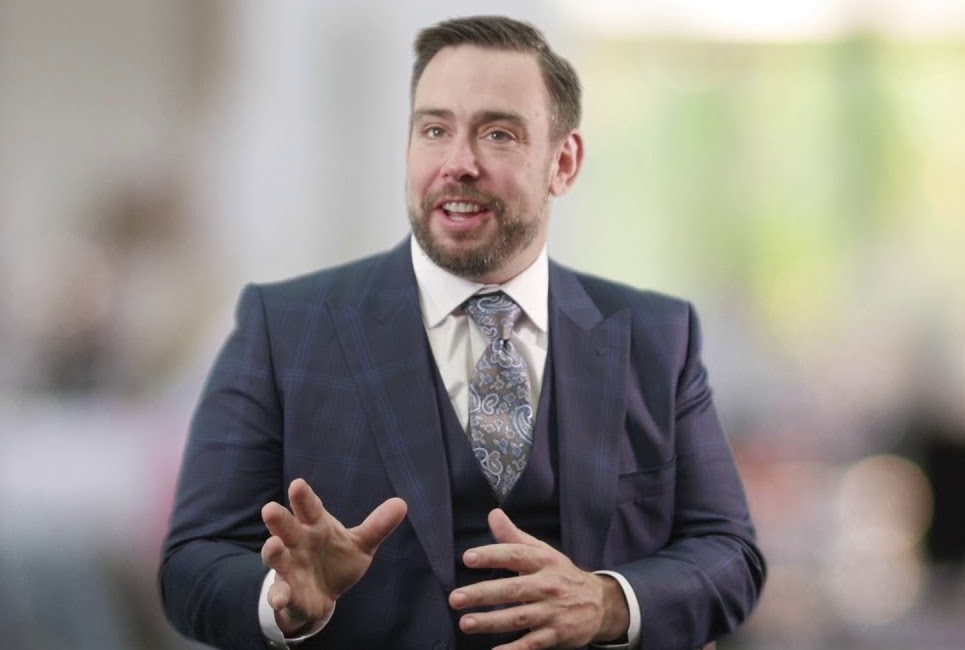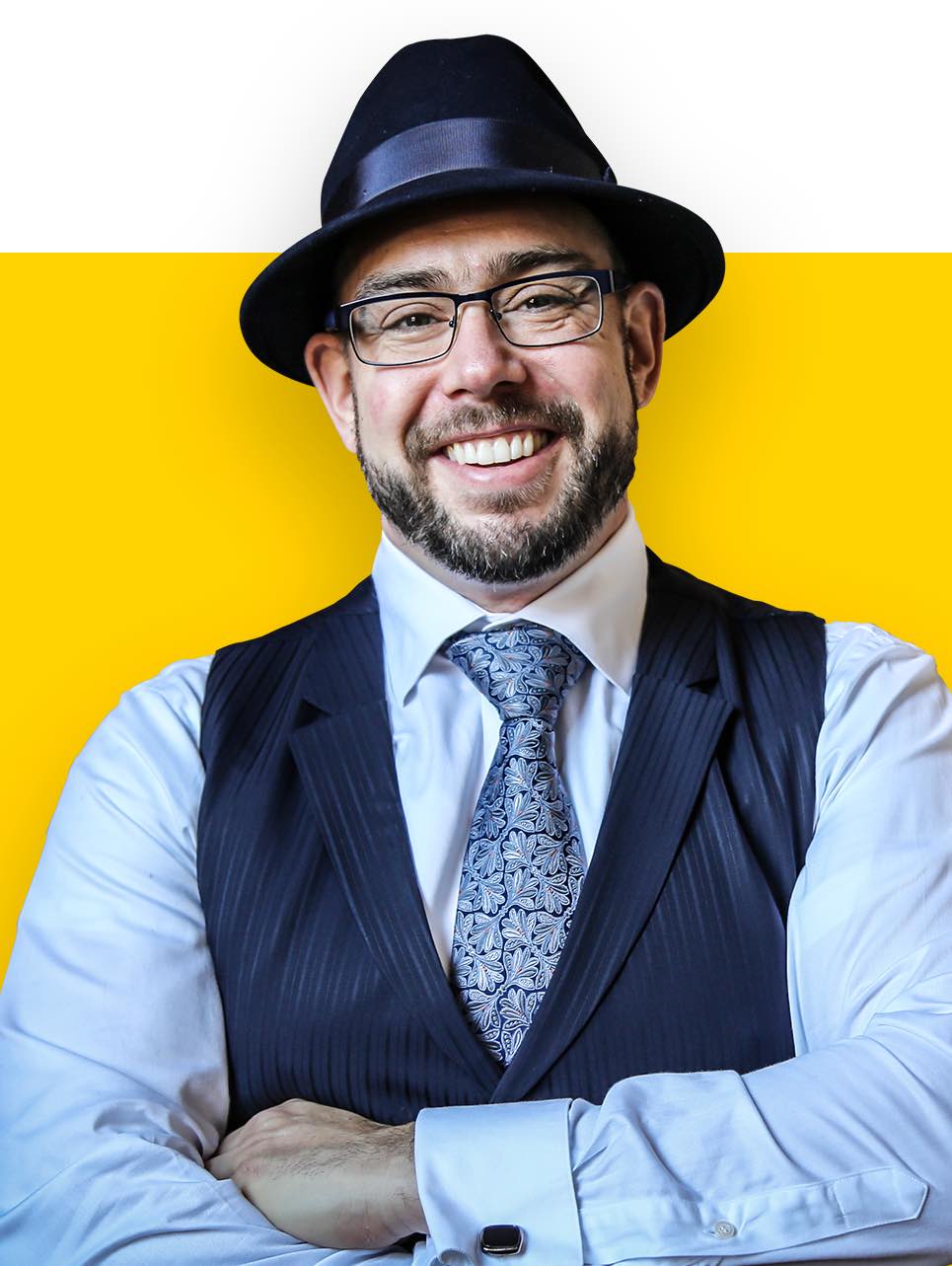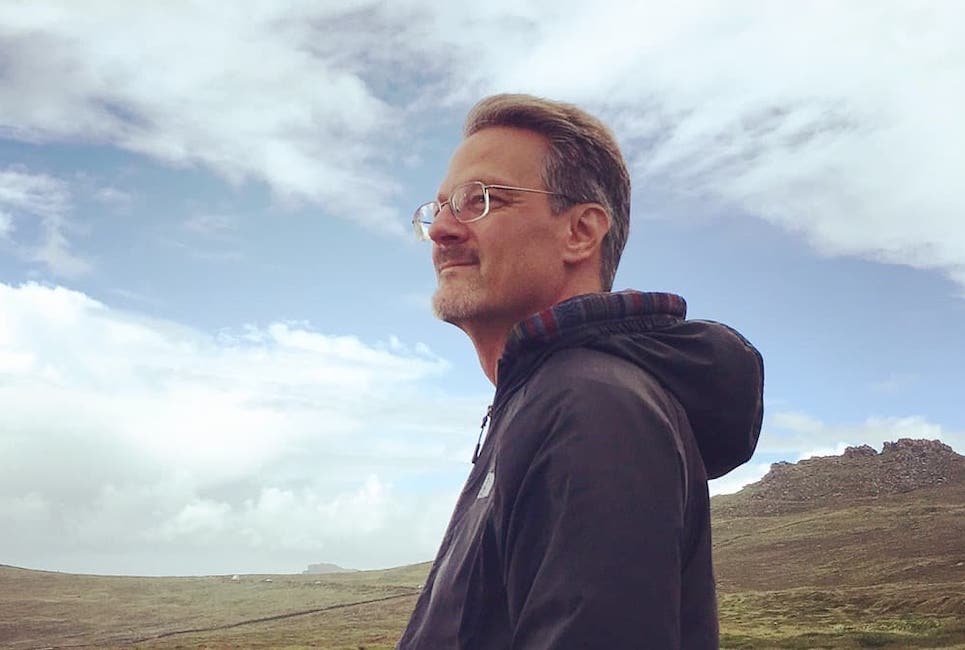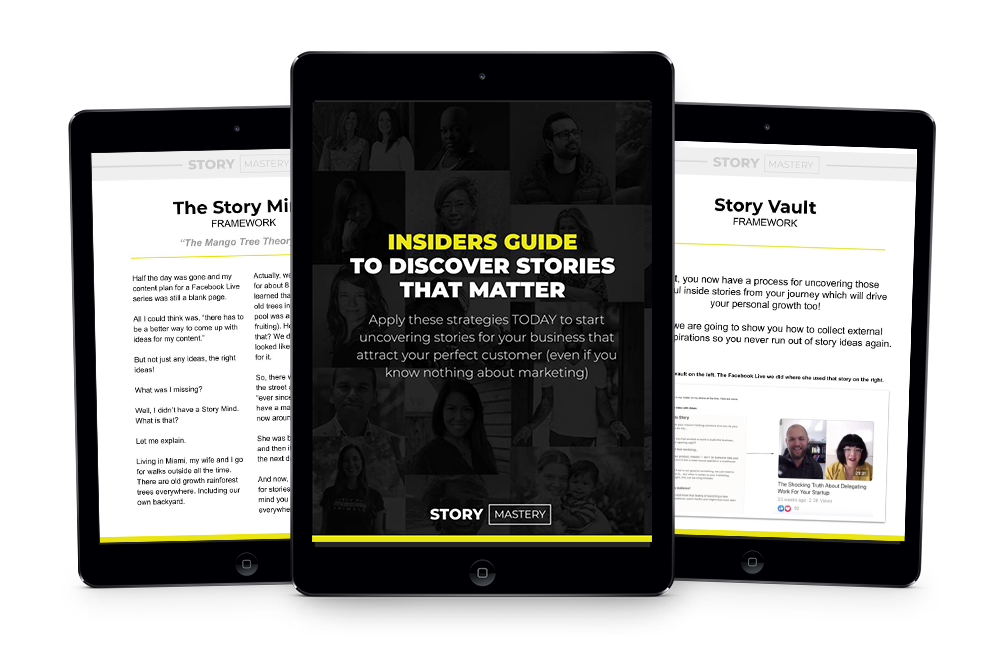Listen to our exclusive interview with Taryn:
Subscribe to this show on Spotify | iTunes | Stitcher | Soundcloud
The fashion industry has a lot of bad practices that need to course correct, but where you do even start?
Taryn Larock went from a model to a sustainable fashion business owner. In this discussion, she explains why she made the change and the steps she had to take to make the business happen.
About Taryn:
Taryn Larock is the founder of the sustainable brand Sage Larock, who previously worked as a model until launching the brand in 2015. Taryn Launched the brand specifically to offer women a sustainable & ethical alternative to traditionally made apparel. Taryn previously apprenticed under eco-fashion pioneer Linda Loudermilk in Los Angeles. SAGE LAROCK was recently awarded ‘Best Made in California Brand’ by the Los Angeles Business Journal (PETA Nominated), and has been featured in the Zoe Report, Modern Luxury Magazine & Angeleno Magazine.
Learn more about Taryn and her work at > http://www.sagelarock.com
We also recommend:
- Wei Houng: Creating The Right Money Mindset
- Adam & Amy: How to Take a Stand with Your Brand and Not Lose Sales
- Ensuring Your Green Initiatives Make a Difference
Transcription of Interview
(Transcribed by Otter.ai, there may be errors)
Adam G. Force 00:03
Welcome to the Change Creator podcast where entrepreneurs come to learn how to live their truth, get rich and make a massive difference in the world. I’m your host, Adam forest co founder, Change Creator and co creator of the captivate method. Each week we talk to experts about leadership, digital marketing and sales strategies that you can implement in your business and life to go big, visit us at Change Creator comm forward slash go big to grab awesome resources that will help drive your business forward. Hey, what’s going on everybody? Welcome back to the Change Creator podcast show. This is your host, Adam force, excited to jump into this next conversation because fashion is such a big industry. And there’s a lot of bad practices, let’s just say. And so every time I anytime I see an entrepreneur tackling those issues, I’m excited to talk more about it. You know, we had Rachel Fowler on here and some other people in the fashion space, like Jake orok, and they’re doing a lot of great things. And so today we’re going to be talking with her name is Taryn Lorac. All right. And she was actually previously a model until she launched her business in 2015, which is a sustainable brand called Sage Lorac. And it is obviously a fashion brand. And they specifically offer women a sustainable and ethical alternative to traditionally made apparel. So she’s gonna dive into what that’s all about and what she’s trying to accomplish Exactly, and how she’s doing it and things like that. So this will be a fun conversation. Now, if you missed the last episode, it was with way, and way you know what I’m gonna remember executives pronounce the last name, I think home. And you know, he’s a super smart dude. I bet him back in January 2020. Before COVID kind of took off, we were out in California at a summit for a mastermind we were both part of, and he did a great talk out there. And he talked about money mindset, that is his specialty. And so this is a topic I’m always interested in. And if you missed that, you’ll want to go back, check it out. There’s a lot of good nuggets of information in there that will help you. And guys, if you’re not following us on Facebook yet, be sure to stop by Follow us on Facebook. We share a lot of information and updates there. We’ll be doing some more lives and videos and things like that. And from there, you can also find the button to go to our Facebook group be a Change Creator. Alright. And that group will have a little more in depth conversation about different topics in business and things like that. Alright guys, that’s it. For now, we’re going to kick this off. Don’t forget to stop by Change creator.com forward slash go big get your goodies. We’ll be actually making some updates to that very soon. Um, I think that’s it. Let’s jump into this conversation about the fashion world.Okay, show me the heat.
Adam G. Force 03:09
Hey, Taryn, welcome to the Change Creator podcast show how you doing today?
Taryn Larock 03:13
Good.
Adam G. Force 03:14
Awesome. I, as I mentioned, before, we jumped on here, I’m excited to talk about the fashion industry. There’s just such a big matzah ball out there when it comes to fashion. And the cost of you know, we’ve all heard probably by now fast fashion or having supply chains that are, you know, not fair trade, or there’s children involved, you know, under age workers and things like that. So, so much. And then, of course, the pollution factor, right. So I’m excited to hear more about, you know, your journey of why you started a fashion company and made that decision, and kind of like where you are today and what’s going on. So we’ll dig into that stuff. Maybe you can just give us a little background to kick us off of kind of like, why, why you’re where you’re at now.
Taryn Larock 04:04
Yeah, absolutely. So, um, for years, I worked in the fashion industry in a different way. I did some modeling work in the US and Europe. And so I came out of that and I, I knew I wanted to be able to leverage the knowledge that I had gained from the industry. And I wanted to do something entrepreneurial, but also something that was sustainable. And so at that point, I was looking into different avenues whether I want to do textile design or, or work for a brand and I just, I found it very challenging to to find something that was in alignment with my principles of sustainability, and also from a human rights perspective. And I think what you said is it’s it’s a big matzo ball is the best way to put it because, and it’s getting the industry is getting better, but going back to about 2012 13 when I was I was just working with this as a concept central rock as a concept and a sustainable brand, that, that had that deeply embedded into our brand ethos. There just there was an awful lot out there at that point. So that’s that’s how I kind of got started because I was having difficulty finding a job that was in alignment with my own principles. And it would that I found would be interesting. And could could go in a direction where sustainability and and ethical production would be at the forefront. I just had, well, I’m not finding it. So I should just launch it. So here we are.
Adam G. Force 05:45
And what were some of the major, I guess, as you were figuring this out, and we all go through this discovery phase of figuring things out, you know, you know, what was standing out to you about the industry that you wanted to make sure if I do this, I’m going to do it differently. I’m going to do X, Y, and Z, like what were the I know, there’s a lot of different things about the fashion industry, but what really important to you and stood out, that’s a major issue that we’re tackling here that you want to do differently.
Taryn Larock 06:16
So I there were a couple things that struck me is really important, from the get go. And one of them was using fabrics that are either organic, or upcycled. And then also ethical production. And there’s a lot of greenwashing in the industry. I think specifically now with with the industry, it’s kind of trendy or cool to to be sustainable or have a sustainability initiative embedded into a brand. But I wanted to be transparent and have integrity in that rather than just say, Oh, well, we do one one piece that’s kind of sustainable, or that I can pass off is sustainable. I didn’t want anything to do that. Because having been in the industry in a different way, I saw that. I saw that. Women and now unfortunately, this is this is happening to men, we’ve all been kind of sold a bill of goods where we need to consume different things every season. And that has to be very trend driven. And it’s like we’re all kind of women. And as I said, Now men were locked into the cycle of consumption. And I thought that’s, that’s not really the way it should be. I understand that that drives more profits, but it’s it’s not in alignment with in my opinion of running an ethical brand to to constantly be in this loop of buy and do away with what you had. I think that that’s probably one of the least sustainable things we can do also. So I wanted to really drive a product that we lead with style and quality and wearability season after season and year after year, something that wasn’t going to fall apart in the washing machine, which happens with a lot of swimwear. Unfortunately, after you know you wear it for summers done, it looks trashed. But I’m yeah, I’m proud to say with the materials that we use in the in the manufacturing process that we use, but that isn’t the case. Just to test this, I kept the very first suit that we that we cut and sewed for myself, and I wear the heck out of it. And it’s still it’s still going so I wanted to lead with that. And then also, you know, I I’ve seen sweatshops when I was interviewing garment production here in Los Angeles, and I previously thought they only existed, you know, in mainland China or, or Sub Saharan Africa, but they are they’re underground parking. Lots here in Los Angeles in the financial district I’ve seen so it’s just and they’re quite sad places and a lot of brands use them because it you know, can double or triple your your profit margin. But yeah, I didn’t want anything to do with that. So, you know, just really Those were the key factors that I really wanted to consider in in even coming up with a prototype. And if we couldn’t meet, if we couldn’t meet those standards, I was going to step back and revisit how to do things in a better way. Yeah, I definitely believe that the fashion industry is operating is kind of an old dinosaur crawling around from ethical and sustainable standpoints. And it’s it’s changing, but it needs to change more quickly and catch up with consumer demand and doing things in the right way is my opinion.
Adam G. Force 09:35
Yeah, I mean, you brought up washing and and you brought up you know, a couple of key things that were important to you. And I think there is there’s just you know what it’s like not that greenwashing has come up when when the sustainability movement got traction. And I realized that it’s greenwashing it’s for everything. You know, it’s really just everybody wants to pretend To be something in order to get the reap the benefits, but not actually follow through and act, you know, walk the walk. And we see it so much. So I am… Now, if you look so as you explore this and you figure out like how you’re going to set up your business? Were you talking to like, were you looking at manufacturers overseas or just in the US?
Taryn Larock 10:25
So initially, we were just looking in the US just because I’m launching the brand, it was just myself and one other woman. And we we just really wanted to make sure we had full visibility on on what was going on. We didn’t want someone to say, Oh, yeah, we’re going to make this but we’re we’re going to send pieces over to Xyz factory, and we don’t have visibility on that. And then we’re calling ourselves an ethical and sustainable brand. But yeah, we really wanted to make sure that was the case, and also support the local garment industry here. A lot of it post 2008 went overseas, and there’s just so many talented people here we wanted to support.
Adam G. Force 11:06
Sure. Yeah, I mean, I’m always curious about that, because, you know, we’re not ecommerce on our end, and I have explored those ideas. And I’m looking at things like Ali Baba, and I’m just like, wow, yeah, a million different things, and then travel all over the place and look at these places. And it just got overwhelming to me. I mean, keeping in the states is nice. I mean, in my mind, more importantly, I like what you said is like it’s easier to manage, if it’s in the States, because you can get it and things like that. That’s smart. I guess the most important thing would be getting the quality of the product as in sustainable or whatever materials and all those things. Sometimes that stuff can get really expensive in state, and did you notice big differences at all? Or are not really?
Taryn Larock 11:55
You’re quite right. It definitely is more expensive. I think just because the sustainable market is kind of a niche market. So it’s, it’s definitely gonna be what I’ve seen about double or triple the cost. But on the flip side of that coin is the, it matches the quality with that, too, for what I’ve seen. So I mean, I just think from the perspective of building a better product, it makes sense, because our customers being interested in sustainability, they don’t want to just buy something and throw it away. After after one season. So yeah, it is more expensive, though. And it’s unfortunately unavoidable. We get all our materials from Italy, so it’s even more expensive. But worth it.
Adam G. Force 12:46
Yeah, I mean, listen, listen, that is the differentiating selling point just has to be clear. And you’re right, people will pay for better quality, meaning I don’t want to buy 10 bathing suits, I wanna, I wanna, you know, and my wife and I, like I literally was just buying, we were looking because we bought our first house a while ago. And we’re like buying a lawn mower. And I’m like, I could use the exercise anyway. So we’re paying someone to cut the lawn right now. It’s like, I can do it once in a while too. And as soon as we go to buy anything, I’m like, you know, I could get this like longmore for like 200 bucks, but then I’m gonna end up buying another one a year later. So it’s like, yeah, piece of crap is gonna play out. Same idea with any product, right? Like you always want to buy, it’s more expensive to buy cheap than it is to just get quality right out of the gate. Right. So true. Yeah, that makes a big difference makes a big difference. So I think that’s worthwhile. I think that’s good. And one thing that’s challenging in this marketplaces, and I don’t know, if you’ve seen this is like, Well, everyone will quickly fill out a survey or tell people that they support sustainable products. And that’s what that they’re going to spend more on organic, sustainable, whatever it might be. But it’s odd, because the survey data says, Whoa, look at this, look at these behaviors and attitudes are all in line with this, I’m gonna I’m gonna create this sustainable product, we’re gonna be rich. But then, when push comes to shove, and they get to put money down, and they see a really cool bathing suit from like, h&m for $50 versus another one for 75 at like scotch and soda or something, you know, they’re like, yeah, okay, I’m gonna get the one for 20 bucks. And this is what’s happening. It’s a very interesting disconnect about what they what they want to feel and say and do with what they actually act on.
Taryn Larock 14:35
It’s so true. And and I think it’s, you know, just to give everyone a brief little history lesson, it’s the fashion industry in 2008. When we we had the economic crisis, a lot of a lot of our production was sent offshore and in order to compensate for for and kind of correct consumers not purchasing and looking for discount goods or Not purchasing at all. The market was flooded if everyone remembers back with a lot of fast fashion. Yeah. And so I think, you know, it’s the $5 t shirt or the $20 jeans, and he said, the $15 bathing suit or swim trunks, and it’s just, you know, or five pairs of socks for like 10 bucks. And there’s a cost associated with that. Like, he doesn’t want to buy something in Payless. Everyone does, of course, but at the same time, there is a cost associated with that. And a lot of those costs are you know, we’re we’re destroying waterways by dumping toxic chemicals from carcinogenic dyes into waterways. And guess what those dyes go into your bloodstream via the largest organ, we all have our skin. Yeah, and you know, and that’s, that’s probably a whole nother discussion. There’s a human cost associated, which is there’s an estimated I think it’s 20 million people in modern slavery, which are in the fashion industry, garment production industry. And that’s just below tech and animal agriculture. So the fashion industry isn’t really doing well with with rankings on human rights, labor laws being upheld, because a lot of it is done in in third world economies, whether those regulations are in place, or as I mentioned, like underground kind of secret places in just under our noses, and in other global cities and first world countries. So it’s like, yeah, I want that $15 bikini, but what is it? What is the cost associated with it, and you’re right, it is like, it’s like your lawnmower, you’re just gonna end up buying another one. So it’s kind of like, we all have to be retrained. And unfortunately, the garment industry, like the market isn’t gonna do it. For us, we have to, I think it’s a reprioritization of our values. It’s like, if we look at our parents, closet, or grandparents closets, they had like, four or five really nice suits. You know, my grandmother had like four or five really nice dresses, some suits and then some things to wear to like a wedding or a cocktail party. And she wasn’t she might add a thing or two a year. Same with my grandfather, but it wasn’t this constant consumption of crap. Right? And so it’s, it’s like, what are we buying? And like, we’re throwing it away, it’s going in a landfill, I would say about 80% of the clothing being made is polyester or acrylic, which is plastic. So yeah, and it’s, you know, we’re pumping, I believe we’re pumping about 70 million barrels annually of crude oil to produce virgin polyester. So it’s like, you know, and that contributes to oil spills and fracking. So it’s just what is the cost for that $15. swimsuit. And I think that it’s a lot to ask consumers to sit and break that all down, it’s taken me years to research and I’m a little, I’m obsessed with it. So for me, it’s fun. But it’s it’s a lot to ask as someone who just wanted to go out and get a T shirt. So I think brands need to be remote responsible. And unfortunately, it’s like going in a grocery store. Just because something’s on the shelf doesn’t mean it’s good for you to put in your body. You know, you know, we kind of have to empower ourselves and take that back and be like, No, I don’t want to wear something made by a slave that has a carcinogenic aizome dye in it. It’s just gross. So I’m gonna pay 30 bucks more.
Adam G. Force 18:31
I mean, it’s a tough, you’re right, yeah. Tough shift for people. And I think, you know, the more I learn about human behavior and understanding how environment triggers behavior, it’s like, I struggle. You know, how do I want to say this? So for example, can we really rely on people to make the decisions like that, right? Because they’re in a position where they have all these considerations? And it’s like, Well, sure, I can’t afford this right now. Or it’s in like, they have this intention, where it’s like, it’s an honorable intention. That’s what they want to do. But when push comes to shove, and they have to, they’re scraping by check to check. It’s like, well, I’ve I just can’t afford to do that. And so I think it’s challenging because in capitalism, we have to build businesses. And there’s always gonna be somebody out there cutting the corners to be higher profits, to be higher profits to have higher profits. And that means to do these things that maybe no one else is doing, right. It could be child labor, it could be polluting, could, someone’s always going to be doing that. And we have to rely on the consumer to make the smart choice. When in reality, the way it would work best is if the environment itself didn’t rely on the consumer, just any choice they had the status quo was these these operations were done in a proper way like you’re doing
Taryn Larock 19:58
Yeah, and and You’re so right. I mean, it’s just all things being considered and when the market is offering you, you know, from let’s use h&m as an example. Like they they position themselves as a conscious brand. They’re conscientious of their production. Well, not to knock h&m but yes and no, if you look at the data, so I think that there’s a lot of misinformation out there. And you’re right, it should people should be able to, to make that decision. But what I found even from a consumer standpoint, being a consumer of sustainable fashion, as much as possible, myself, there aren’t that many alternatives out there. And the ones that are, yeah, you have to retain yourself, say, Yeah, I want a sweater. Well, that one’s $90. But it’s organic. And it’s the price I think we need to meet in the middle, like, there needs to be more accessibility for manufacturers and brands to to make things that have a profit margins that are acceptable to do business, and support, support production economies that the consumer can consider accessible. We just make sustainability and ethic you know, ethical fashion, a luxury option. It’s like organic food, like organic food. Now you go into some like dollar stores, there’s organic lettuce, like it has to be accessible.
Adam G. Force 21:22
I know and that that is the biggest challenge, I see a lot of these brands and if someone’s going to tell me that the quality, not only is it organic and sustainable, but the quality of it is going to last me like oh, you can put this in the wash 1000 times and you can wear it you know roughhousing with the kids outside, you know, for three years. And look, it’s still the same high quality shirt or pants I that sells me because I’m buying the quality. So it all of a sudden, like the sustainable part of it is nice, because you’re making a conscious decision. But as far as making sure you’re getting your money’s worth that I think that quality over time factor comes in pretty big.
Taryn Larock 22:04
Yeah, then you’re like sold, I’ll take it there’s a there’s a value add beyond my just feeling good about it. Ladies, I’m actually going to get my money’s worth. It’s like a little return on your investment for your being able to wear it for a few years. She said yeah roughhousing with your kids and your dog, it’s it’s going to pay off. But so I think manufacturers just what you said, Adam, they need to take that into account as well. Because that will be a value add for customers. So for those who are considering a sustainable or an ethical brand, right, like, yeah, embed that in the product, and then it becomes interesting to people. And then also like things that aren’t so trend driven. Because that’s a little trick that the fashion industry is done on us to keep profits, right. I mean, but it’s not necessary. It’s it’s just the way it’s been done. It doesn’t need to be the way it continues to operate. No, no, you’re right. And then that’s where the higher price comes into. We’re not gonna keep selling you a bunch of random things. It’s its own style. Yeah, you’ll be good new year or two
Adam G. Force 23:09
Man, smart people were a lot of the same thing all the time. Remember that?
Taryn Larock 23:13
Yeah, it’s true. It’s more efficient.
Adam G. Force 23:16
It is like a uniform, but where’s my black t shirt and jeans? That’s my outfit.
Taryn Larock 23:21
Uniform dressing. I’m a huge fan
Adam G. Force 23:24
Yeah. So tell me a little bit. What were some of the most actually before even ask that… Does the higher costs necessarily come from the manufacturer or from the materials that need to be accessed?
Taryn Larock 23:41
So it’s, it’s kind of twofold. So I mean, in an ideal world, the savings would be passed on to the customer, right? Like, I’m not going to create some some, you know, arbitrarily high profit margin for myself. To to qualify, the fact that I bought some fabric that was more expensive. With what we use specifically, the matter of fact is even though it shouldn’t be the case, like organic cotton farming, or like hemp farming, because it uses, like, bugs don’t like hemp, they’re just not going to touch it with a 10 foot pole, so you don’t even need insecticides on it. So it’s nice. It’s it’s just yeah, it’s not something they have an appetite for. So you would think that would be less expensive, because it’s less. It’s more efficient to produce, you know, it’s less like ours tending the plant, right. But that’s not the case because it’s still kind of a niche product. They’re producing less of it so it’s more expensive. And with this swimwear fabric we use they’re actually teams of divers. And then recently, we worked with the marine conservation group, Sea Shepherd, and they’re pulling out like plastic poachers, nets. That it’s crazy, like some of them are miles long each. So there’s not a cost associated with getting like besides the crews pulling them up, but it’s like the product is already there and you just there’s a process to like grind it up and turn it into fabric. So, you know it, it is, I think it’s more expensive because less of it is being done. Yeah. And then also, you know, we just live in a world where, like, if something doesn’t have all the chemical compounds and whatnot going into it, it’s, it’s going to take more time potentially to produce because again, less of it is just there’s less demand for it. And so I think once that demand grows, then things will become more accessible. So when more brands, you know, companies get on the bandwagon of utilizing these materials, it’s going to be better for all of us.
Adam G. Force 25:54
Yeah, that makes a lot of sense. It’s like going Costco versus the family owned little corner store.
Taryn Larock 26:00
Totally. It get support, but it may be double the price. So yeah,
Adam G. Force 26:05
Yeah. Oh, my God. It’s tough man. But I yeah, I guess yeah, I then I’m, it kind of leads me into my question I wanted to ask before is just what have been some of the challenges for you personally, not just with, you know, I guess just anything in the scope of getting your business off the ground that you’ve had to overcome, you know, during your process, since you started?
Taryn Larock 26:35
Yeah, and it’s, it’s interesting, um, I think some of the some of the things that we roadblocks that we ran up against initially have what I’ve been proudest of having kind of is our brand ID later on, and really what is made, I believe the brand worthwhile and special. Like, when when I was starting out, and trying to source some, some organic or upcycled fabrics, people would be like, Well, I have no idea why you want this, this is not the way it’s done. And I got so much pushback, you know, and and now this is what is the differentiating factor of what we do and why we do it. So there was a lot of that and just, I mean, finding things that are a reasonable price. And, and that it’s still in the fashion industry, a lot of the organic stuff. It’s like, I mean, I you know Whole Foods has like a little clothing section in some of their stores. And it’s nice, it’s like Fairtrade cotton, the manual, like the quality is not always it’s not always like a lot of longevity built into the product. Because it’s, it’s, it’s not supposed to be a luxury product. But it’s like finding things that will last it’s like using some of those organic fabrics. It’s nice that it supports Fairtrade. And it supports, you know, organic farming. But then I think, I think looking at things and being like, well, I can’t use that because I bought those before they fall apart after being washed four times. So shrink. And so it’s like finding something that is going to be functional, stylish, and have some longevity, longevity and then be have quality production. And like when I was trying to put all those pieces together again, I kept getting pushback of why would you want to do that? Why would I want? Why would I want that when I can go to Whole Foods and get you know, the organic underwear for like 15 $18 Why would I want to pay more? Why are you making this like show us where the demand is. And again, I feel like the pushback that we got is what has made us special. So I’m glad we stuck through it. But it’s still it’s still a process that is consistently being worked out. So I don’t want to say that that’s totally in the rear view.
Adam G. Force 29:03
Gotcha. Gotcha. Makes sense. And what what do you I guess, what’s the vision now for you over let’s say in 12 months, like, what does your brand look like?
Taryn Larock 29:19
Um, so we’re continuing to grow our our swimwear line, I mentioned that we recently worked with the marine conservation group, Sea Shepherd. So they had pulled out 40 tons of nets out of a marine reserve. These were poachers nets from Chinese fishing boats that their shark fishing net. So it’s for shark finning. And some of these are worth like 10 grand each. You know, they’re they’re not supposed to be there and they kind of have to sneak in and be very stealth and drop these nets that are pretty much unbreakable. So we’re very proud to be able to work with the different nonprofits to, to kind of highlight what they’re doing and then show how the fashion industry, I think it’s interesting that the fashion industry has a lot of power, because it’s got a lot of visibility. And it’s like, you know, people pay attention to fashion. So one of the things we like to do is, is partner with nonprofits or causes that are tied to the fashion industry or tie them in different ways. Like canopy planet we also work with as a nonprofit, they, they work to protect global forest areas from the fashion industry. And it’s like a lot of people don’t know that millions of trees, old growth trees even are logged every year to produce cheap fabric rayon and viscose. So it’s, I think we’d like to continue to raise awareness about protecting key conservation areas by which can be actually done through fashion consuming, which I think is kind of cool. So we’d like to continue on in that vein. And then also, we’re rolling out a couple new product lines, and one is going to be lingerie for women. And so we’re going to be doing all organic fabrics dyed with botanical, totally non toxic natural dyes, because I saw that there’s a lot of organic, like underwear socks out there. And those are the things that are closest to our lymphatic system where we absorb like a lot of what we put on our body, which is kind of scary that most of it is pretty toxic. So and then there’s a lot of organic stuff out there, but it’s dyed with chemical dyes. That kind of negates the fact it was organic to begin with another greenwashing issue. So we’re gonna do like, totally clean, we’re excited about that. So just, you know, I would really like to grow the brand and offer more to consumers, and more diverse product range with diverse partnerships to just really highlight that sustainable fashion can be functional and stylish.
Adam G. Force 31:55
Hmm, that’s awesome. Yeah. And it’s interesting that you’re partnering with lots of different nonprofits and I guess, what about like, how is it been from an e commerce standpoint in fashion? You know, marketing, like getting set up with an e commerce shop like or, you know, or is your site on Shopify you doing your own thing? I think some of those little details might be helpful for people just to see like what you kind of worked through and where you landed?
Taryn Larock 32:23
Yeah, absolutely. So yeah, we’re on Shopify, which is, which has definitely helped. I think that’s important for product base, e commerce platforms. And also, we’ve just started exploring doing some, some different partnerships, and some digital marketing. And then we have also partnered with some influencers that are aligned with the brands. So from a marketing perspective, when we started out, it was just kind of organic word of mouth. But now is, as we’ve which is amazing that we got a lot of brand ambassadors that way, just aligning with with some people’s principles and what they were interested in, and they’re being excited to take part in, we were really honored and blessed to have from day one. But now growing, we’ve partnered with a really amazing app, I don’t know if you’re a lot of your listeners or your community of check this out. But it’s called good on you. And it’s a they’re out of Australia. And they’re an app that ranks on pretty much every brand out there in terms of sustainability, ethical production. So it’s a really nice resource for consumers to be able to just have on their phone or check out online, and you’re like, Oh, I really like this brand. What are they up to? Is this sustainable or not? They, they kind of do all the research for you. And then tell you why it is good or not based upon their rather thorough rating system. So we’ve partnered with them to to promote our brand, digitally as well. So So yeah, we’re just exploring a few different options. And we’re looking into getting into some I know it’s a funny time for a lot of businesses right now. But we’re looking to expand it to Australia, southern hemisphere, but more as well.
Adam G. Force 34:18
Interesting. Okay. Yeah. Very cool. Well, listen, I want to make sure you get a chance to give a shout out. So anybody interested in checking out your shop and what you offer and all that good stuff, the products? Where do they go?
Taryn Larock 34:33
Totally. So online, check us out at Sage la rock dot com and then feel free to message us on Instagram. If you have any questions. And it’s Sage underscore laroc. And, and and yeah, we’re happy to answer any questions about sustainability. We love to chat about that. So yeah. And look forward to connecting with people.
Adam G. Force 34:54
Cool. All right. Well, thank you so much for being here. Sharing all your insights and doing What you do appreciate it. Thank you Adam. Thanks for tuning into the Change Creator podcast visit us at Change creator.com forward slash go big to get access to free downloads and other great resources that will drive your business forward.
